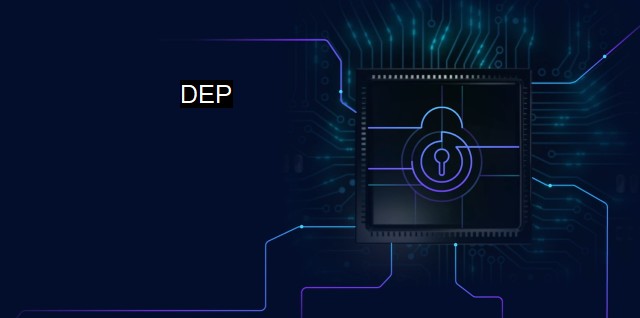What is DEP?
Protecting Your System: The Importance of Data Execution Prevention (DEP) in Modern Cybersecurity
Data Execution Prevention (DEP) is a technological security feature designed to enhance security against viruses and other security threats on systems. It operates by preventing the execution of maliciously tainted codes from unknown sources and securing the system by alerting or shutting it down when a threat is detected. DEP specifically prevents unauthorized and potentially hostile code from being executed in memory areas reserved for Windows and other pre-approved applications.The concept of DEP revolves around the memory division and different types of memory usages by computing systems. It was initiated to provide software and hardware a level of protection against damage and exploits caused by viruses. Typically, computer system memories are divided into two significant areas: one for data storage (containing the application's data, variables, etc.) and another for executable instructions (which the processor frequently fetches and executes). DEP is employed to isolate these segments and ensures that data segment doesn’t execute any code.
The superb advantage of DEP is that it can prevent many types of hacking attacks, which include buffer overflow attacks. This buffer overflow attack is the most common problem where the attacker attempts to overload the buffer memory of an application to execute malicious code. By blocking an essential channel that viruses used traditionally, the overall vulnerability of the system to malware attacks, worms, and viruses are significantly diminished. Therefore, DEP plays a critical role in securing the system and its integrity.
DEP can implement its feasibility in two forms, software-enforced DEP and hardware-enforced DEP. The software-enforced version protects from attacks happening within Windows-created processes and applications, while the hardware-enforced version utilizes the technology and capability of the processor to prevent memory execution. The former blocks harmful code from executing within protected memory space, which reduces possible harm, while the latter takes full advantage of chipset technology, helping to preempt dangerous code execution.
More importantly, while DEP added a layer to the defenses of both the Windows operating system and any installed antivirus software, it should not be seen as a replacement for antivirus software. Antivirus software and DEP works hand in hand to prevent threats from various channels. DEP does not have the capabilities to prevent exploits that involves downloading malicious files, phishing, keylogging, etc., – and this is where the importance of antivirus software comes into the fray. They are complementary to each other in a comprehensive security context, working together to offer more robust security for the system.
While DEP is a significant line of defense, it is not foolproof. Sophisticated threats may still find a way to bypass DEP mechanisms or take advantage of legitimate application vulnerabilities. Configuration of DEP settings can also impact system usability. When configured to work with all programs, it may block legitimate programs from functioning properly or generate "false positives" alarms, which may further require intervention from the user or IT personnel.
DEP is instrumental in minimizing damage from potential threats. It provides users an additional layer of security apart from the commonly used firewall and antivirus solutions, hardening the overall defense mechanism of systems. The effective collaboration of DEP with antivirus software further strengthens system defenses, promoting safer browsing, and enhancing cybersecurity. All in all, Data Execution Prevention analogous to the sentinels standing guard against invaders, diligently warding off any possible execution of harmful and malicious code that might undermine the security and well-being of the computing environment.

DEP FAQs
What is dep in cybersecurity?
DEP stands for Data Execution Prevention, it is a security feature used to prevent the execution of potentially malicious code or unverified scripts on a system. It works by marking portions of a computer's memory as non-executable, preventing programs from running code in those areas.How does dep protect against viruses and malware?
DEP protects against viruses and malware by preventing them from executing their code in certain areas of a computer's memory. This makes it more difficult for attackers to exploit vulnerabilities in software or inject malicious code into a system.Can I disable DEP on my computer?
While it is possible to disable DEP on a computer, doing so can leave the system vulnerable to attacks that exploit memory vulnerabilities. It is generally recommended to leave DEP enabled, and only disable it temporarily when troubleshooting software compatibility issues.Does DEP affect the performance of my computer?
DEP can have a slight impact on the performance of a computer, as it adds an extra layer of processing to monitor and enforce memory protections. However, this impact is generally considered negligible, and the added security benefits provided by DEP far outweigh any minor performance impacts.Related Topics
Malware detection Endpoint security Behavioral analysis Vulnerability management Endpoint detection and response (EDR)
| | A | | | B | | | C | | | D | | | E | | | F | | | G | | | H | | | I | | | J | | | K | | | L | | | M | |
| | N | | | O | | | P | | | Q | | | R | | | S | | | T | | | U | | | V | | | W | | | X | | | Y | | | Z | |
| | 1 | | | 2 | | | 3 | | | 4 | | | 7 | | | 8 | | |||||||